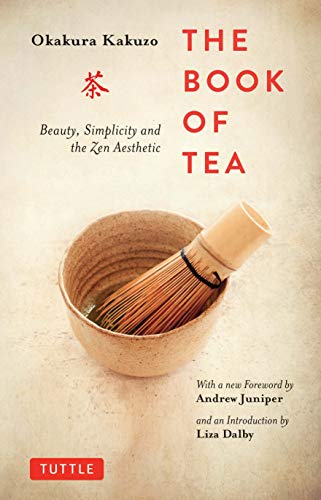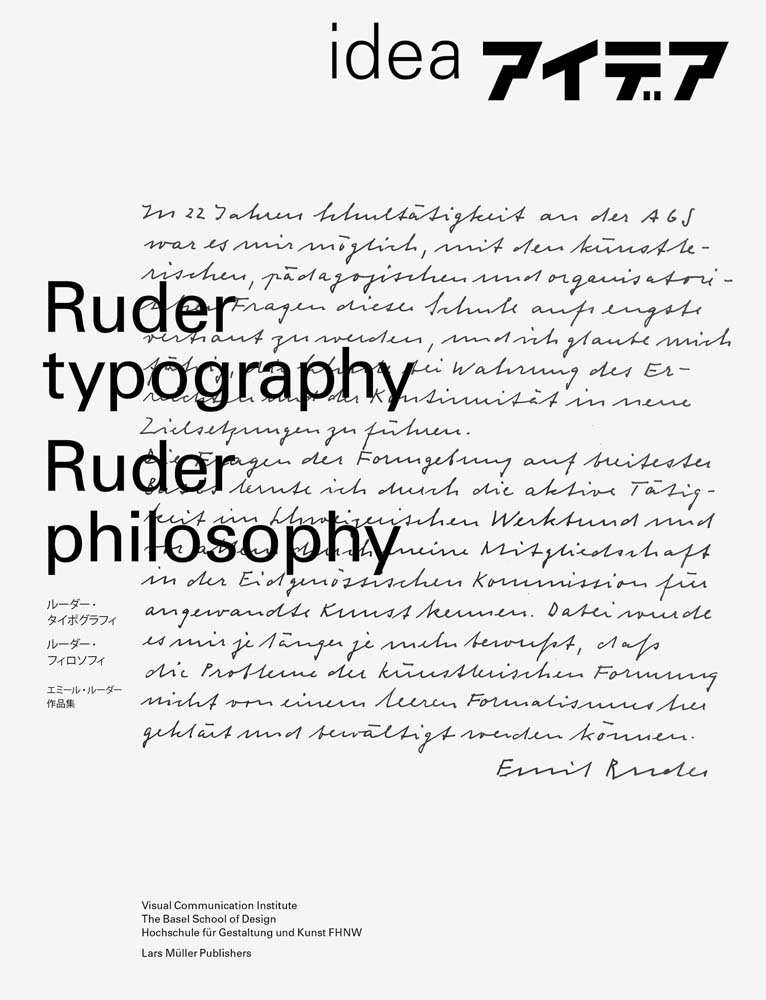Ever since I’ve learned that Emil Ruder, renowned Swiss typographer, wrote an article entitled “On drinking tea, typography, historicism, symmetry and asymmetry”, I’ve been on the hunt to track it down. All of the original publications has been out of print, but I finally found it printed in a Japanese design magazine, idea, of all places.
My relationship with drinking tea goes back to my childhood, spending afternoons sipping tea with my grandpa, who still to this day makes the most aromatic, nourishing cup of tea I’ve ever had. My father tells me it’s the Yixing clay teapot he uses, which, after decades, has developed a patina of tea oils. I plan on writing more about tea in the future, but what I want to say is that what I appreciate most about tea culture is what keeps me inspired about typography. The history, the craft and the necessary integrity one has to approach both disciplines if one is to do it well is on closer examination very similar. So it was such a delight to have what I’ve felt for a long time reflected in none other than Emil Ruder.
In the article, he mostly quotes The Book of Tea, a seminal text on tea culture written in 1906 by Okakura Kakuzo. Because I’ve already read this book, I didn’t learn anything new about tea per say. It was nonetheless interesting to learn how Ruder connects the two. And if you haven’t read The Book of Tea, the following article is definitely a worthy read. Here it is.

On drinking tea, typography, historicism, symmetry and asymmetry:
‘The heaven of modern humanity is indeed shattered in the Cyclopean struggle for wealth and power. The world is groping in the shadow of egotism and vulgarity. Knowledge is bought through a bad conscience, benevolence practiced for the sake of utility. The East and West, like two dragons tossed in a sea of ferment, in vain strive to regain the jewel of life. We need Niuka again to repair the grand devastation; we await the great Avatar. Meanwhile, let us have a sip of tea. The afternoon light is brightening the bamboos, the soughing of the pines is heard in our kettle. Let us dream of evanescence, and linger in the beautiful foolishness of things.’
In 1906 Okakura’s the Book of Tea was published, in which he, as a Japanese, introduced to Europe the depth and refinement of Far Eastern culture. On reading through the pages of this small and narrow book one is surprised at just how much of general relevance is conveyed. In the sections Taoism and zen-philosophy, the tea-room, Evaluation of art, Flowers, and Tea-master, the major problems concerning philosophy, art and architecture are discussed in a stunningly simple way. Our domain of oft-recurring subjects in typography, such as symmetry, asymmetry and historicism, appear in a new light. Let’s look at the section ‘the tea-room’:
‘The tea-room is an Abode of the Unsymmetrical inasmuch as it is consecrated to the worship of the Imperfect, purposely leaving something unfinished for the play of the imagination. In the tea-room it is left for each guest in imagination to complete the total effect in relation to himself. The art of the extreme Orient has purposely avoided the symmetrical as expressing not only completion, but repetition. Uniformity of design was considered as fatal to the freshness of imagination. In the tea-room the fear of repetition is a constant presence. The various objects for the decoration of a room should be so selected that no colour or design shall be repeated. If you have a living flower, a painting of flowers is not allowable. If you are using a round kettle, the water pitcher should be angular. A cup with a black glaze should not be associated with a tea-caddy of black lacquer. In placing a vase or an incense burner on the tokonoma, care should be taken not to put it in the exact centre, lest it divide the space into equal halves.
Here again the Japanese method of interior decoration differs from that of the Occident, where we see objects arranged symmetrically on mantelpieces and elsewhere. In Western houses we are often confronted with what appears to use useless reiteration.’
These thoughts appear to us worthy enough of providing enrichment to the subject of asymmetry/symmetry. Nowhere could we find so eloquently expressed, that asymmetry is allied to the simple, the natural, and also to freshness and to the highly imaginative – in contrast to deliberate and more monumental symmetry. As a result, however, we find ourselves already in contrast with today’s relevance. The increased tendency towards matter being set centred, is disquieting and painful for every advocate of contemporary typography. This retrograde movement, which has amassed followers in the widest circles, affects all fields, particularly architecture, and not just in Switzerland either.
The path to centered setting is often the path of minimal resistance, because one shies away or does not master the requirements of good asymmetry: the construction with typographical elements on a plane, the activation also of the unprinted plane. Admittedly, centered setting has much in its favour, for even a poor work doesn’t topple over; it has the central axis to support it. On the other hand poorly designed asymmetry is an altogether different story.
We can only begin to understand contemporary typography when design is interwoven in the closest possible way with the spiritual, social, scientific and technical manifestations of today. We should not put aside the Book fo Tea without first reading what Okakura has to say about taking refuge from the present and historicism:
‘Art, to be fully appreciated, must be true to contemporaneous life. It is not that we should ignore the claims of posterity, but that we should seek to enjoy the present more. It is not that we should disregard the creations of the past, but that we should try to assimilate them into our consciousness. Slavish conformity to traditions and formulas fetters the expression of individuality in architecture. We can but weep over those senseless imitations of European buildings which one beholds in modern Japan. We marvel, among the most progressive Western nations, architecture should be so devoid of originality, so replete with repetitions of obsolete styles. Would that we loved the ancients more and copied them less! It has been said that the Greeks were great because they never drew from the antique.
The claims of contemporary art cannot be ignored in any vital scheme of life. The art of today is that which really belongs to us: it is our own reflection. In condemning it we but condemn ourselves. We say that the present age possesses no art—who is responsible for this?’
The situation today appears to us disturbing. In restraining our own restlessness we should not be praising the acknowledged high standard of our printed product without casting a sidelong glance at the educational contributions made by our polytechnics. We realize a resignation, a turning back, an uncertainty, a question for the continuity. One has the feeling that what is needed today is the same as that period which followed form-obscuring Impressionism: the search for a principle, conscious image forming and a unified view of life.
It is our conviction that, in the whole world, all of us are subject to the same principles. The Gothic woodcut artist, the Greek vase painter and the Egyptian hieroglyphic painter were all faced with the same task, our task: to place elements on a surface, to make them harmonize and to relate them to a higher order.
